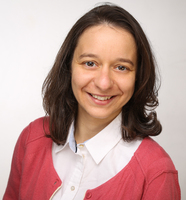PD Dr. med. Kalliopi Pitarokoili, Managing Director Neurological Clinic, Neurologische Universitätsklinik, St. Josef Hospital
Scientific Background

The spectrum of inflammatory polyneuropathies ranges from acute variants such as Guillain-Barré syndrome (GBS) to chronic neuropathies such as chronic inflammatory demyelinating polyneuropathy (CIDP). Both forms are characterized by an autoimmune reaction that leads to increased mortality and disability. We conduct in vivo research with animal models and in vitro research with cell cultures to gain a better understanding of the underlying immunological mechanisms and to develop new therapeutic options, both in the context of immunodulatory substances and in the context of nutrition.
Through the INHIBIT patient registry, founded in 2019, we examine clinical markers of inflammatory activity and characterize serum parameters of disease activity. The register is part of the biobank network of the Ruhr University Bochum BioNet.RUB.
Contact via inhibit@klikum-bochum.de
INHIBIT publications: https://pubmed.ncbi.nlm.nih.gov/?term=CIDP+pitarokoili+INHIBIT&sort=date
PROPIONATE STUDY
- https://news.rub.de/presseinformationen/wissenschaft/2023-01-24-medizin-propionsaeure-schuetzt-nervenzellen-und-unterstuetzt-ihre-regeneration
- https://www.klinikum-bochum.de/medien/aktuelles-details/propionsaeure-im-darm-schuetzt-die-nervenzellen.html
- https://gbs-selbsthilfe.org/2023/01/30/nahrungsergaenzung-gegen-nervenerkrankungen/
Field Of Work And Methods
- In vitro cell cultures (Schwann cells, neurons)
- Organ culture (dorsal root ganglion [DRGs]), slice culture (lymph node sections)
The neuroimmunological laboratory of the Ruhr University Bochum investigates the autoimmune mechanisms in CIDP. The main goal of this research is personalized medicine, to find a suitable therapy for every patient at an early stage. By the detection of specific antibodies in the serum (NF155, CNTN1 or CASPR1) an individualized adaptation of treatment can take place. - Flow cytometry, histology, western blot, ELISA and other immunoassays
- Experimental autoimmune neuritis: electrophysiological and behavioral studies (Von Frey Hair Test, Rotarod)
- Skin biopsies and corneal histological analyses
Current Topics / Projects
- Immunomodulatory and neuroprotective treatment options for experimental autoimmune neuritis in Lewis rats (including ex vivo, in vitro)
- The role of the intestinal immune system in the development of autoimmune diseases of the peripheral nervous system
- Transgenic mouse models of autoimmune neuropathies
- Characterization of serum and CSF antibodies (INHIBIT patient registry) and correlation with clinical parameters
Clinicsl Examination Methods
Nerve and muscle ultrasound
In the recent years, our clinic has increasingly used high-resolution nerve ultrasound as a complementary method to nerve conduction studies for the diagnostic imaging of inflammatory polyneuropathies. By a thorough examination one can reliably assess two main parameters of the nerve morphology, namely the cross-sectional area (CSA) and the structure of the individual nerve fascicles. An increase in CSA serves as a sign of inflammatory affection, which may early distinguish chronic from acute forms of inflammatory neuropathy and should improve with therapy.
Nerve sonography, however, can only detect superficially located neural structures. Anatomically deeper regions, e.g. nerve roots cannot be displayed. The supplementary MRI scan (MR neurography) of the lumbar plexus should close the diagnostic gap and detect inflammation of the nerve roots.
Corneal confocal microscopy
Confocal Corneal Microscopy (CCM) is a technique that reveals the nerve fibers of the cornea as well as cellular (possibly inflammatory) infiltration. Changes in the density or cell infiltration of the corneal nerves may possibly serve as marker of nerve damage or inflammation.


